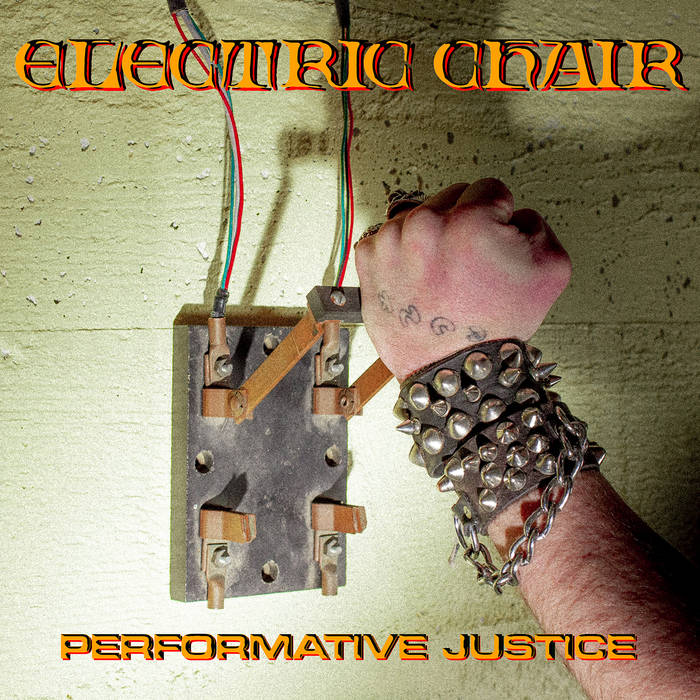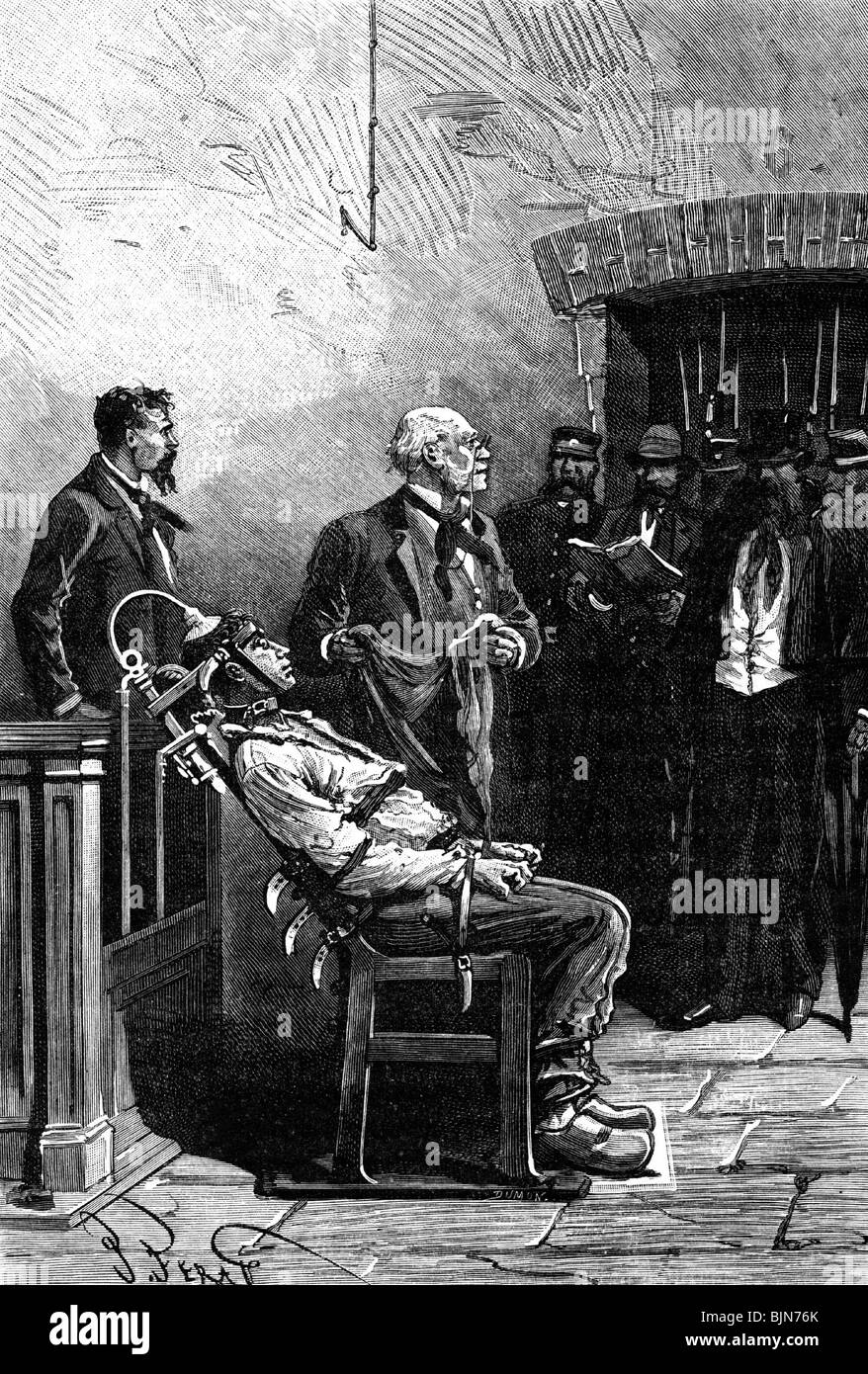"1 Girl 1 Electric Chair": The Shocking Truth & Legacy
Is it possible for the pursuit of justice to become a spectacle of horror, a chilling tableau played out for the world to see?The phrase "1 girl 1 electric chair" encapsulates a dark chapter in legal history, a story that intertwines capital punishment, societal biases, and the often-blurred lines between retribution and cruelty. This isn't simply a recounting of facts; it's a deep dive into the emotions, the controversies, and the enduring debates surrounding capital punishment, especially when the subject is a woman. It is a journey into the heart of a legal and moral maelstrom that continues to stir controversy today.
When we contemplate the intricacies of capital punishment, our minds often conjure images of hardened criminals, gruesome offenses, and the relentless quest for vengeance. However, what happens when the accused is young, vulnerable, and female? The narrative of "1 girl 1 electric chair" plunges us back into moments in history where the distinction between justice and brutality became agonizingly faint. This is not merely a story about an electric chair; it's about the societal norms, legal frameworks, and moral quandaries that envelop such cases, probing the very core of our beliefs about fairness, compassion, and the value of human life. Prepare to delve into some truly weighty matters. You won't view the phrase "1 girl 1 electric chair" in the same light again.
The electric chair, a symbol of finality and dread, wasn't always perceived this way. In the late 1800s, when electricity was still a relatively new concept, it was promoted as a "humane" alternative to hanging. Indeed, "humane." But as history reveals, this claim was often far from the truth, revealing a story rife with ethical debate and tragic consequences.
The United States witnessed the debut of the electric chair in 1890, and it quickly became a fixture in many states' execution chambers. The underlying principle was straightforward: deliver a lethal dose of electricity to halt the heart and brain functions. However, the designers did not foresee the blunders, the gruesome spectacles, and the ethical storms that would inevitably follow. In cases involving women, the stakes were even higher. Below are some key facts:
- William Kemmler in New York was the first to be executed using the electric chair.
- Initially hailed as a scientific advancement, the early years were marred by errors and missteps.
- Over time, the electric chair evolved into a deeply controversial method of execution, fueling debates about its efficacy and moral implications.
When we think about capital punishment, the image of a man is most often the one that comes to mind. And for good reason: women constitute a small percentage of those sentenced to death. But why is that? Do women commit fewer crimes, or is it because society treats them differently? The narrative of "1 girl 1 electric chair" sheds light on these complexities.
There are multiple factors at play:
- Social norms: Women are often seen as caregivers, making it more difficult for juries to impose the death sentence.
- Jury bias: Studies have shown that juries are less likely to impose the death penalty on women.
- Media portrayal: Female criminals are often depicted as victims of circumstance, which can sway public opinion.
When these factors fail, the result can be as shocking as the phrase "1 girl 1 electric chair" implies. Now, let's explore such a case.
Martha Place, the first woman to be executed by electric chair in the United States. Her narrative is simultaneously tragic and controversial, exposing the complexities of capital punishment. The following is a succinct overview of her life:
| Name | Martha Place |
|---|---|
| Date of Birth | March 13, 1849 |
| Date of Execution | March 20, 1899 |
| Crime | Murder of her stepdaughter |
| Sentence | Death by electric chair |
| Location | Sing Sing Prison, New York |
| Reference | Wikipedia |
Martha's case was among the first to introduce the phrase "1 girl 1 electric chair" into the public consciousness. Her trial and execution sparked debates that continue to resonate today.
Martha Place's case extended beyond the issue of guilt or innocence, reaching the broader issues surrounding capital punishment. The following are some of the controversies that plagued her trial:
- Domestic Violence: Martha claimed she acted in self-defense after years of abuse from her husband. This raised questions about the role of domestic violence in criminal cases.
- Media Sensationalism: The media's coverage was relentless, frequently portraying Martha as a monster. This affected public opinion and, in the opinion of some, the jury's decision.
- Legal Representation: Martha's defense was inadequate, raising concerns about the fairness of her trial.
Martha's case sparked intense debate, drawing attention to societal norms, legal structures, and the moral dilemmas surrounding capital punishment. It compelled people to confront difficult questions: Is it ever acceptable to execute a woman? Should domestic violence be considered a mitigating factor in criminal proceedings? These are questions that still linger today.
The legal system played a crucial role in determining Martha's fate. Every stage, from the trial to the execution, was rigorously examined and debated. Below is a breakdown of how the legal system handled her case:
- Prosecution: The prosecution painted Martha as a cold-blooded killer, ignoring the context of her abuse.
- Defense: Her defense team was underfunded and inexperienced, resulting in a weak case.
- Appeals: Martha's appeals were denied, despite evidence of domestic violence and inadequate legal representation.
This is the crucial question. Many argue that Martha's trial was flawed and that the legal system failed her. Others, however, point to the evidence against her and argue that justice was served. As always, the truth is somewhere in the middle.
Public opinion was divided on Martha's case. Some viewed her as a victim of circumstance, while others saw her as a cold-blooded killer. The media had a significant impact on these perceptions, frequently sensationalizing the specifics of her crime.
Here's a snapshot of public reaction:
- Supporters argued that Martha was a victim of domestic violence and deserved leniency.
- Opponents claimed that her actions were heinous and warranted the death penalty.
- The media fueled the debate, often exaggerating the facts to increase readership.
At the core of Martha's case lies a moral dilemma: was justice truly served? This question prompts us to examine our own views on capital punishment, gender, and the legal system. It is not an easy question to answer, but it is one that must be asked.
In this context, justice is not just about guilt or innocence. It encompasses fairness, compassion, and understanding. Martha's case challenges us to rethink what justice entails and how we can achieve it.
Martha's narrative offers valuable lessons about capital punishment, gender, and the legal system. Here are a few takeaways:
- Capital punishment is flawed and frequently unjust.
- Women are treated differently in the legal system, but not always fairly.
- Domestic violence should be considered in criminal cases.
Martha's narrative serves as a reminder that we must strive for a fairer, more compassionate legal system. It's not just about the phrase "1 girl 1 electric chair"it's about the lives behind it.
The debate over capital punishment continues. While some countries have abolished it, others continue to employ it as a form of justice. The narrative of "1 girl 1 electric chair" remains relevant, reminding us of the human cost of this contentious practice.
Here's a quick look at the current state of capital punishment:
- Many countries have abolished the death penalty, citing human rights concerns.
- Others continue to use it, frequently igniting international outrage.
- The debate over its effectiveness and morality rages on.
As we reflect on the narrative of "1 girl 1 electric chair," we are reminded of the complexities of justice, morality, and the human condition. Martha Place's case was not solely about her; it was also about the larger issues surrounding capital punishment. It challenges us to analyze our beliefs critically and strive for a more just and compassionate world.



Detail Author:
- Name : Cristian Borer
- Username : norberto77
- Email : hane.beau@konopelski.com
- Birthdate : 1979-10-27
- Address : 21337 Orlo Bridge Denesikview, LA 37227
- Phone : 1-845-958-3109
- Company : Roob Ltd
- Job : Clerk
- Bio : Quae est non similique voluptas culpa cupiditate quia. Reiciendis reiciendis facilis odio nulla impedit rem. Deserunt iusto id enim nihil eos.
Socials
linkedin:
- url : https://linkedin.com/in/gage.muller
- username : gage.muller
- bio : Iste nihil qui nihil ut.
- followers : 6609
- following : 1782
twitter:
- url : https://twitter.com/gage_xx
- username : gage_xx
- bio : Ab quia adipisci assumenda. Nam dolores officia recusandae aut maiores distinctio.
- followers : 4867
- following : 2465
instagram:
- url : https://instagram.com/gmuller
- username : gmuller
- bio : Voluptatem quo ad molestiae quo. Cumque sed eaque incidunt.
- followers : 5784
- following : 1454